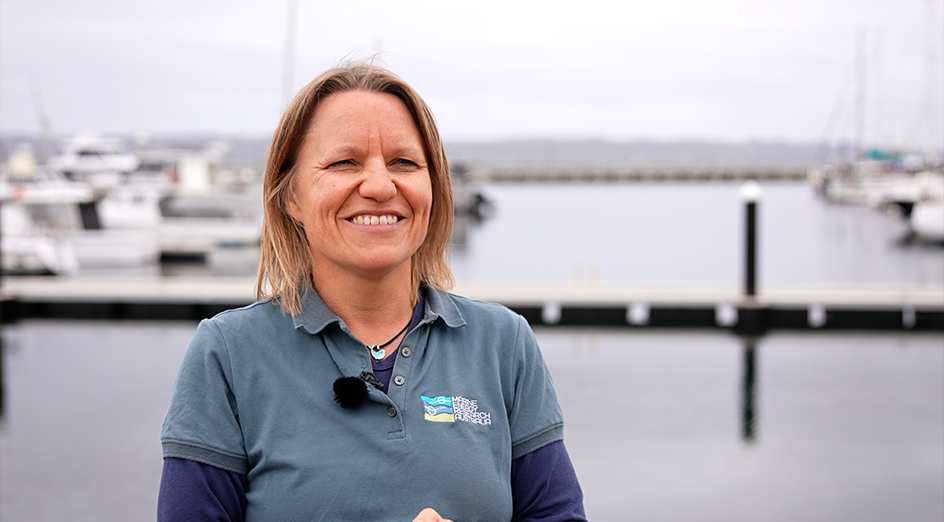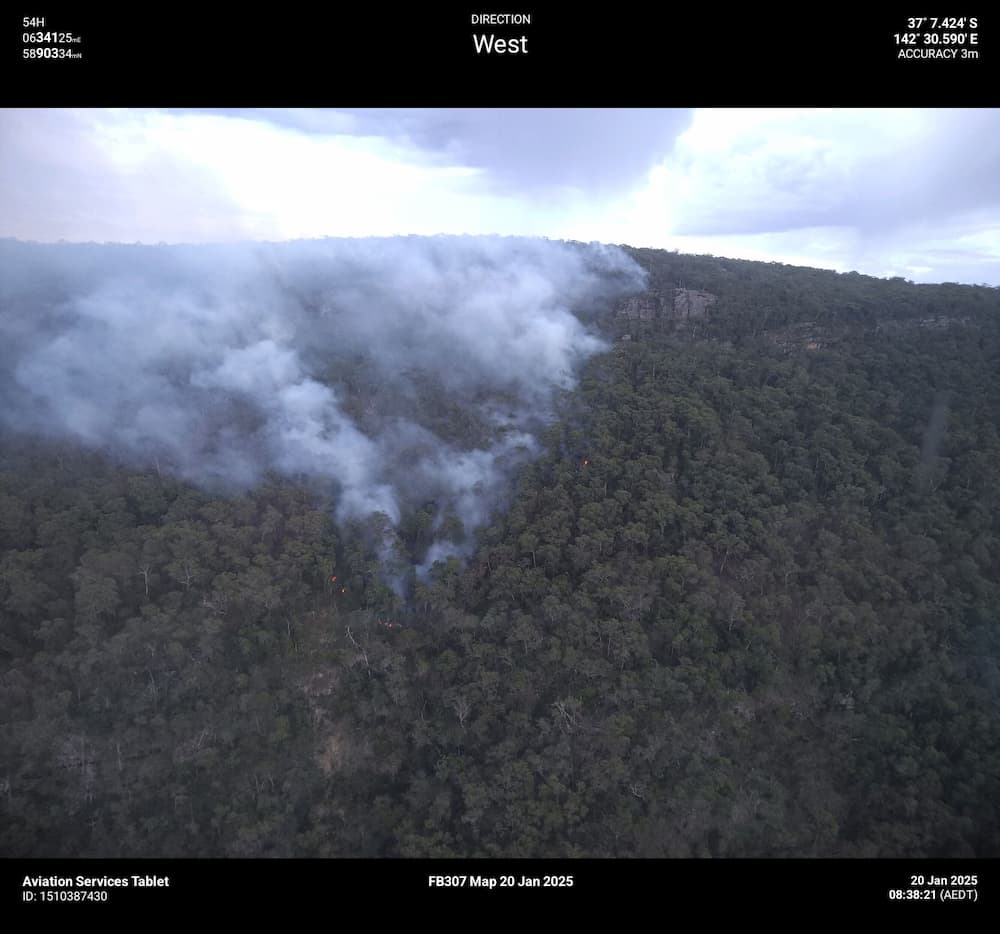By Annelies Gartner
Girt by sea, Australia is uniquely well-placed to decarbonise the economy by leading offshore renewable energy generation, including wave energy.
In November 2024, the ‘Moored MultiMode Multibody’ device or M4 was deployed about 1.5km offshore in King George Sound, the outer harbour of Albany in Western Australia.
The deployment was part of the M4 Wave Energy Demonstration Project led by The University of Western Australia’s Marine Energy Research Australia (MERA) and is a world-first initiative to showcase Albany’s wave energy resources and research expertise.
Dr Wiebke Ebeling, Centre Manager of MERA, said the M4 had been deployed for data collection in a six-month, summer sea trial.
“It will validate advanced modelling predictions and support the case for wave energy as a stable, renewable baseload power source,” Dr Ebeling said.
“By openly sharing data from the deployment the project is delivering something that the world has not had before and is the first step towards developing the only test site in Australia for wave energy projects.”
First funded in August 2021 by the Blue Economy Cooperative Research Centre, the WA Government and UWA, it is a fully open-source project that shares with scientists, developers and the community the performance data measured, and the experience gained during designing, manufacturing, deployment and decommissioning.
 Image: Dr Wiebke Ebeling.
Image: Dr Wiebke Ebeling.
“This is an opportunity for Albany to become Australia’s renewable energy capital and it’s been very exciting to talk to the local community and empower them as part of the project,” Dr Ebeling said.
“By harnessing the wave resources in King George Sound which provide a smaller-scale version of open-ocean conditions, it can be established as a test site for reduced-scale model technologies to diversify the local economy and develop a future zero-emission industry.”
Professor Christophe Gaudin, Director of the UWA Oceans Institute and MERA, said the surface-riding wave energy converter featured a unique 1-2-1 float array, which generates electricity through the flexing motion of its hinge.
“The device is flexing with the wave so when the back end and front of the device are at the crest of the wave, the centre is at the trough,” Professor Gaudin said.
“That rotational movement is transformed into electricity by an onboard generator, and we measure the electricity captured to understand how much energy we can generate based on the wave resources in Albany.”
The M4 project also highlights the capabilities of the local Albany supply chain, engaging six local contractors and manufacturers in building, assembling, deploying and eventually decommissioning the device, as well as demonstrating the potential for wave energy technology to contribute to local decarbonisation.
“Local contractors and consultants have been involved in mechanical, electrical and ocean work across the project,” Professor Gaudin said.
 Image: Professor Christophe Gaudin.
Image: Professor Christophe Gaudin.
“There has also been academic and research collaboration with partners overseas, notably the University of Manchester, where the M4 concept was developed by Professor Peter Stansby, and in Australia with the Australian Maritime College, the University of Queensland and RMIT in Melbourne.”
The project has the potential to benefit the blue economy, in particular powering the aquaculture industry, and researchers are collaborating closely to understand how a combination of wave, wind and solar could help decarbonise and reach net zero targets.
“Australia’s legacy of oil and gas development in the North West Shelf over the past 40 years has positioned us as a world leader in ocean engineering and ocean science in general,” Professor Gaudin said.
“If Australia can leverage wave energy, it will support growth of the $118 billion blue economy, especially in coastal regions, and utilise an existing skilled workforce to support fabrication, installations and marine operations.
“Having this combination of amazing resources, world-leading research and industry capabilities is quite a unique opportunity that Australia can capitalise on.”
And according to Dr Hugh Wolgamot, from UWA’s Oceans Institute, now is the time for Australia to capitalise and harness wave energy.
Dr Wolgamot works on offshore hydrodynamics and wave-structure interaction problems with application to offshore renewable energy — wave and floating wind.
He was a lead author of the Ocean Wave Energy in Australia report, commissioned by the Blue Economy Cooperative Research Centre and led by a team of researchers at UWA’s Oceans Institute.
The International Energy Agency has forecast the ocean energy sector to grow to more than 300 gigawatts by 2050, while Europe and other regions are advancing wave energy with funding support and policy.
“The world’s largest and most consistent wave energy resource is along Australia’s southern coast and there is immediate potential for renewable energy development in the face of climate change,” Dr Wolgamot said.
“Results from Australia and around the world show combining wave energy technology with wind and solar can cost-effectively reduce the need for energy storage.”
The average power of the ocean waves crossing the perimeter of Australia’s continental shelf is estimated at about 10 times Australia’s average rate of electricity consumption.
“Persistent strong winds along the vast coastline of the Southern Ocean create energy in large waves, which bring renewable energy towards the shores virtually continuously,” Dr Wolgamot said.
“The south and south-west mainland coastline and the south-west coast of Tasmania in particular experience the highest wave power levels, with exceptionally high-quality waves, with minimal intermittency and relatively small extremes — two characteristics essential for uninterrupted energy production.”
Wave energy can help Australia achieve its net zero targets — Australia’s climate strategy focuses on achieving net-zero emissions by 2050, with interim goals including a 43 per cent reduction in emissions by 2030 and an 82 per cent renewable electricity share by 2030.
It can also be used to provide coastal communities with protection from coastal flooding and erosion which will increase in frequency and intensity with climate change.
“Waves can be reduced or altered in a controlled manner by wave energy installations,” Dr Wolgamot said.
“Data collected from devices such as the M4 can be used to lead best practice in environmental impact assessment and social and cultural engagement to plan future offshore developments.”
It is hoped the deployment of the M4 device is the first of many wave energy projects in Albany and will help establish Australia become a world leader in renewable energy.
“Federal and state governments need to take a strategic view of the wave energy industry,” Professor Gaudin said.
“Australia has many advantages, but we need to develop the vision, strategy and support required to match its immense potential.”







